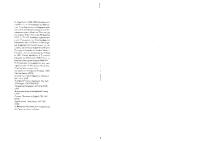WNL The Working From Home Revolution Upp - Worksheet [PDF]
The working-from-home revolution Level 2 l Upper intermediate 1 Warmer Many people are now working from home. Which of
23 0 319KB
Papiere empfehlen
![WNL The Working From Home Revolution Upp - Worksheet [PDF]](https://vdoc.tips/img/200x200/wnl-the-working-from-home-revolution-upp-worksheet.jpg)
- Author / Uploaded
- Gundesalvus
Datei wird geladen, bitte warten...
Zitiervorschau
The working-from-home revolution
Level 2 l Upper intermediate 1 Warmer Many people are now working from home. Which of these jobs could be done from home and which cannot?
journalist
ker
construction wor
er
bank
computer programmer
drive
r
doctor lawyer
tea
er lice offic
po
pilot
che
r
2 Key words Fill the gaps in the sentences using these key words from the text. The paragraph numbers are given to help you. productivity
pandemic
remotely
lockdown
adapt
shift
run on
resistant
costly
restriction
1. A __________________________ is an occurrence of a disease that affects many people across the whole world. (para 1) 2. A __________________________ is a situation where people are not allowed to leave their homes. (para 1) 3. A __________________________ is a rule, action or situation that limits or controls someone or something. (para 1) 4. A __________________________ is a change in something. (para 1) 5. __________________________ is the rate at which goods are produced, especially in relation to the time, money and workers needed to produce them. (para 4) 6. If you work __________________________, you do not go to a workplace but work from home on a computer. (para 4) 7. If meetings __________________________, they continue for longer than expected or planned. (para 4) 8. When people __________________________, they change their ideas or behaviour so that they can deal with a new situation. (para 6) 9. If people are __________________________ to something, they are against it. (para 9) 10. If something is __________________________, it is very expensive. (para 11)
3 Find the information Find the following information in the text as quickly as possible. 1. What percentage of the UK workforce worked from home before the coronavirus pandemic? 2. Which company is the world’s biggest employer in the marketing and advertising sector? 3. How many people does this company have working from home? 4. How many people does Jellyfish Pictures employ?
NEWS LESSONS / The working-from-home revolution / Upper intermediate
H
Published by Macmillan Education Ltd. © Macmillan Education Limited, 2020.
•P
6. Which three business sectors does the article mention as ‘likely, long-term losers’?
CA O N T O FR BE C O DO O M W P W N IA EB LO B SI A L TE DE E D •
5. According to three-quarters of US chief financial officers, what percentage of their workforce will become permanent work-from-home employees?
The working-from-home revolution
Level 2 l Upper intermediate From boardroom to spare room: the working-from-home revolution
executive, Mark Zuckerberg, said. “We know that most people can’t work from home as easily as many of our employees can.” The companies that are most able to adapt to homeworking are sectors such as media, tech and financial services. For others – airlines, high-street shops, car manufacturing – it is impossible.
Mark Sweney 18 April, 2020
4 “What we have learnt from this is that there hasn’t been any reduction in productivity,” the Jellyfish founder, Phil Dobree, says. “Some practices have improved, such as communication, which is actually more regular and efficient remotely. In the office, meetings often run on unnecessarily, or people don’t communicate enough – now they are.” 5 The speed with which Silicon Valley companies such as Google, Facebook and Twitter ordered their employees to shift to homeworking in late February and early March makes a challenging transition for many companies look easy. 6 “Most Facebook employees are fortunate to be able to work from home,” the company’s chief
9 From that perspective, the likely long-term losers are airlines, hotels and the commercial property sector. It will also change some industries that have been under pressure but can adapt at least. The publishing industry has had the technology to allow many staff to work from home for years, but many companies have been resistant to the idea. 10 The impact of the coronavirus has increased the long-term pressures on publishers, but the cost savings from being able to reduce office space will make the idea attractive to them. 11 “Coronavirus has concertinaed a lot of change we have been seeing over the last number of years in just three months, and flexible working is one of them,” says James Wildman, the chief executive of the Cosmopolitan owner, Hearst UK. “Office space is costly and high density, and a lot of people will be uncomfortable with that even after the virus. Forward-thinking managers were already pushing flexible working, but in more traditional industries, like newspaper publishing, there has unfortunately been a delay.”
Published by Macmillan Education Ltd. © Macmillan Education Limited, 2020. NEWS LESSONS / The working-from-home revolution / Upper intermediate
H
3 For one London-based animation and special effects business, Jellyfish Pictures, working from home has been a surprise success. Jellyfish, which employs about 250 staff and has worked on films including Star Wars: The Last Jedi, has continued to work on projects despite shutting its five UK studios at the beginning of March.
8 The lessons learnt from lockdown could lead to a more rapid and widespread “virtualization” of business practices, according to one investor. “It is clear to us that we are likely to see an increasing virtualization of business life,” says Jamie Ross, of Henderson EuroTrust. “Remote working has gone much more smoothly than many companies feared. We will see more people working from home, smaller office spaces, more online meetings and less business travel.”
•P
2 Mark Read, the chief executive of WPP, the world’s biggest employer in the marketing and advertising sector, welcomes a working-from-home revolution but says it is not right for everyone. “If you said to me five weeks ago that I would have 100,000 people working from home and we would function fine, I’d say you were mad,” he says. “One of the most common questions I get is about working from home longer term. There is interest in it, but there is also a demand to come back to an office. Junior employees and those in shared accommodation find homeworking much more difficult than senior executives with houses and gardens.”
7 But change is happening where it can. A US survey found that three-quarters of chief financial officers believe that at least 5% of their workforce – who worked in company offices before – will become permanent work-from-home employees after the pandemic ends. Of those CFOs, 17% believe a fifth of staff will move to working from home and 4% believe that half of employees will become remote workers.
CA O N T O FR BE C O DO O M W P W N IA EB LO B SI A L TE DE E D •
1 Before the coronavirus pandemic, 1.7 million people mainly worked from home in the UK or about 5% of the country’s 33 million workforce. Since the pandemic, millions more have also started working from home. And there have been warnings that some lockdown restrictions could stay in place into 2021, so companies are facing a sudden cultural shift in how we work.
The working-from-home revolution
Level 2 l Upper intermediate 12 City banks were some of the first to split their operations, sending thousands of staff to work from home. John Cronin, a financial analyst, says bosses will soon realize that most banking roles – including research, trading and sales – are desk jobs that can ultimately be done from home. “This will be a revolution in terms of how we work,” he
says. “There’s a lot of waste. A lot of people travel abroad for one meeting, and I think those days are over.” © Guardian News and Media 2020 First published in The Guardian, 18/04/20
4 Comprehension check Are these statements true (T) or false (F) according to the text? 1. Senior executives find working from home more difficult than junior employees. 2. The founder of Jellyfish Pictures believes that communication has improved while employees are working from home. 3. Mark Zuckerberg believes that media, tech and financial services companies can adapt more easily to remote working. 4. Most American chief financial officers believe that half their employees will become remote workers. 5. The idea of reducing office space is attractive for publishing companies. 6. Banks were among the last companies to ask staff to work from home.
5 Find the word Find the following words and phrases in the text. 1. a noun meaning the total number of people employed by a particular company (para 1) 2. an adjective meaning difficult to deal with or achieve (para 5) 3. a noun meaning the process of changing from one situation to another (para 5) 4. a noun meaning the process of moving to a situation where everything is computerized (para 8) 5. a noun meaning a way of thinking about something (para 9) 6. a verb meaning squeeze or press together (para 11) 7. a two-word adjective meaning planning for the future (para 11) 8. an adverb meaning after a process or activity has ended (para 12)
6 Two-word expressions
practices
2. special
b.
property
3. remote
c.
shift
4. business
d.
space
5. commercial
e.
effects
6. office
f.
working
Published by Macmillan Education Ltd. © Macmillan Education Limited, 2020. NEWS LESSONS / The working-from-home revolution / Upper intermediate
H
a.
•P
1. cultural
CA O N T O FR BE C O DO O M W P W N IA EB LO B SI A L TE DE E D •
Match the words in the left-hand column with those in the right-hand column to make expressions from the text.
The working-from-home revolution
Level 2 l Upper intermediate 7 Word-building Complete the table using words from the text. noun 1.
finance
2.
tradition
3.
culture
4.
commerce
5.
fortune
6.
cost
adjective
8 Discussion
•
If you work from home, you should be paid less.
Published by Macmillan Education Ltd. © Macmillan Education Limited, 2020. NEWS LESSONS / The working-from-home revolution / Upper intermediate
H
The age of business travel is over.
•P
•
CA O N T O FR BE C O DO O M W P W N IA EB LO B SI A L TE DE E D •
Discuss the statements.









